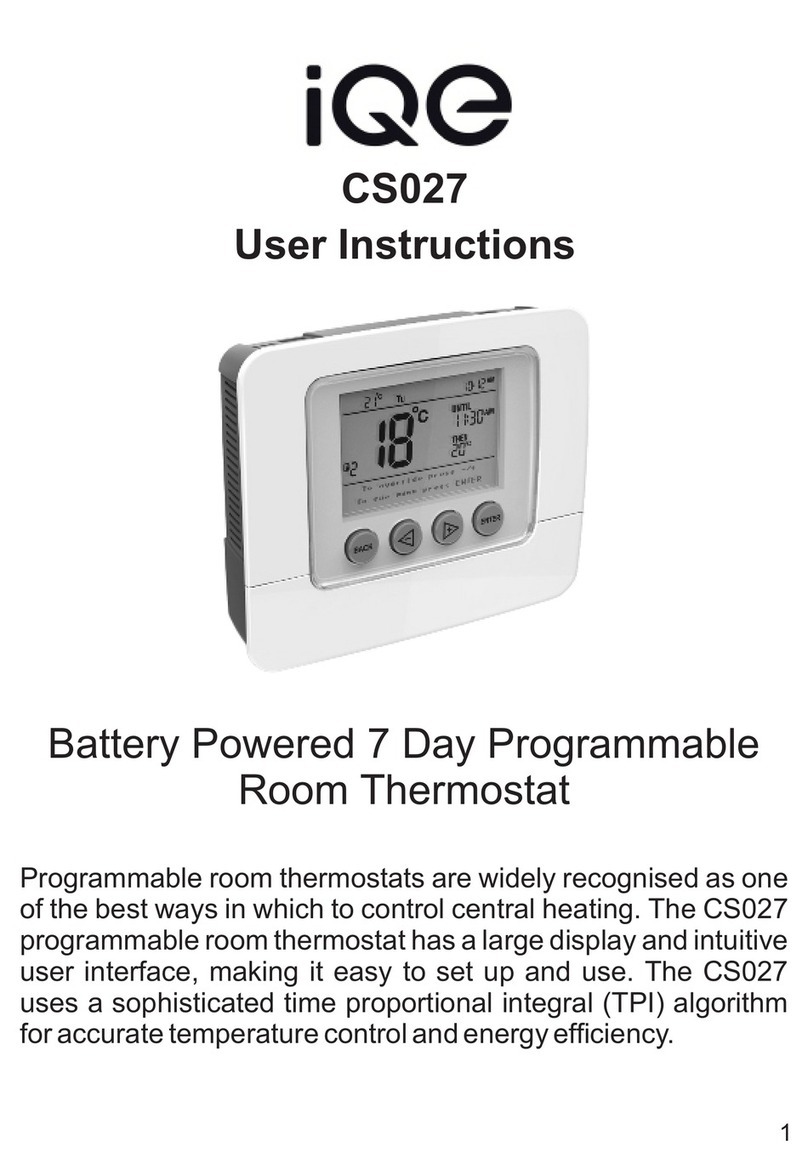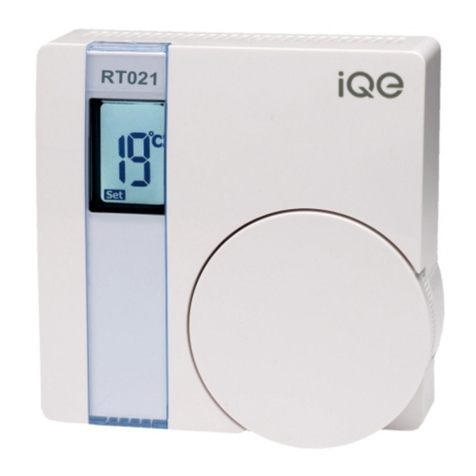Battery replacement
The RT322 runs on 2 x type AAA (Alkaline) non rechargeable batteries and is designed to
give a battery life of approximately two years.
When the batteries are nearing the end of their life a
low battery symbol will appear in the display and the
batteries should be changed within a few days. If the
batteries are not changed at this point eventually a
‘LO’ battery message flashes intermittently in the
display and if this happens the batteries should be
changed immediately.
To change the batteries it is necessary to remove the thermostat from the wall. To do this
first undo the two captive screws at the base of the thermostat and swing the thermostat
up and away from the wall plate.
Remove the old batteries and replace them with two new AAA
size alkaline batteries ensuring that they are fitted correctly as
indicated by the terminal markings in the battery compartments.
Once the batteries are fitted, re-fit the thermostat to the wall plate
by engaging with the lugs at the top of the wall plate and push the
thermostat into position. Locate it over the captive screws at the
base of the wall plate and tighten so that the thermostat is locked
into position.
Check the temperature setting is correct and adjust if necessary.
Please dispose off the batteries responsibly.
Receiver unit
The receiver unit receives the Z-Wave radio signals from the
room thermostat. In the unlikely event of a communication
failure it is possible to override the system and switch On and
Off using the On/Off buttons on the receiver as a local override.
If the override is used to override the thermostat when it is
functioning correctly then the override will be cancelled by the
next switching operation of the thermostat and normal
operation will be resumed. In any case, with no further
intervention, normal operation will be restored within one hour
of the override being operated.
4
Batteries should be
changed immediately
Low battery symbol
appears first when the
batteries are nearing the
end of their life































